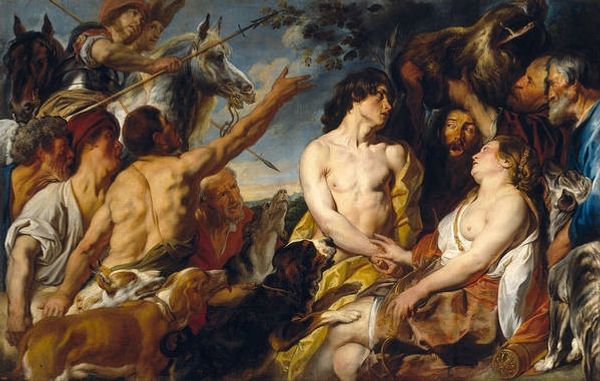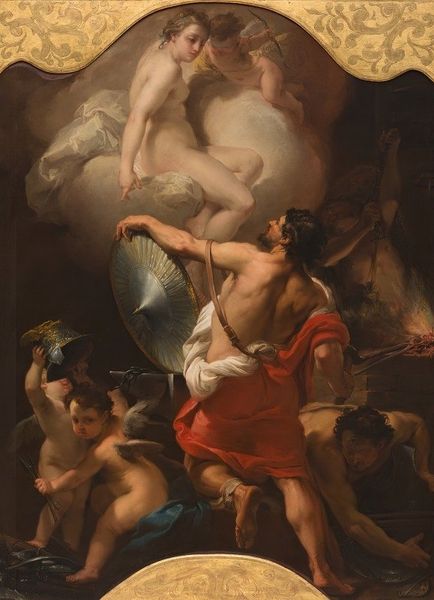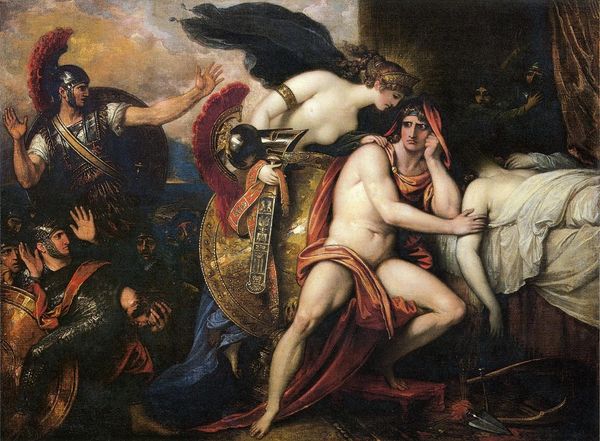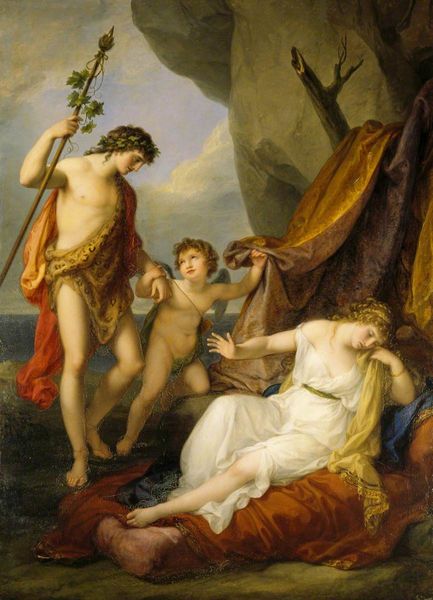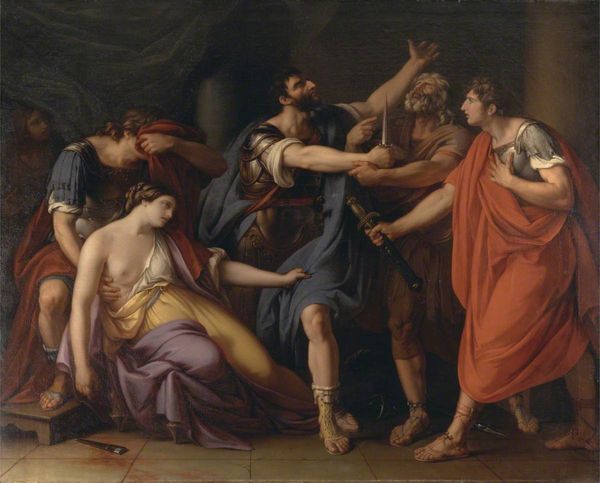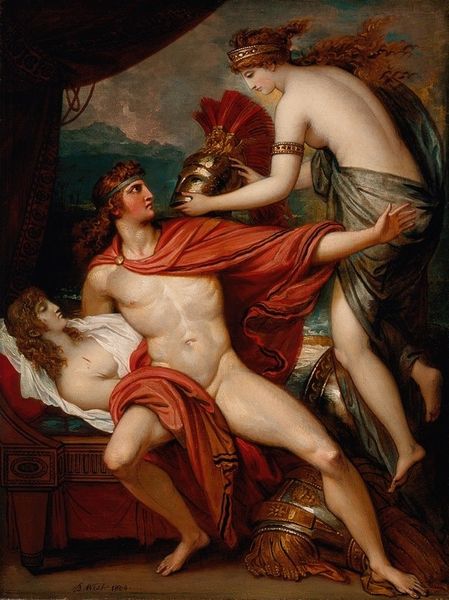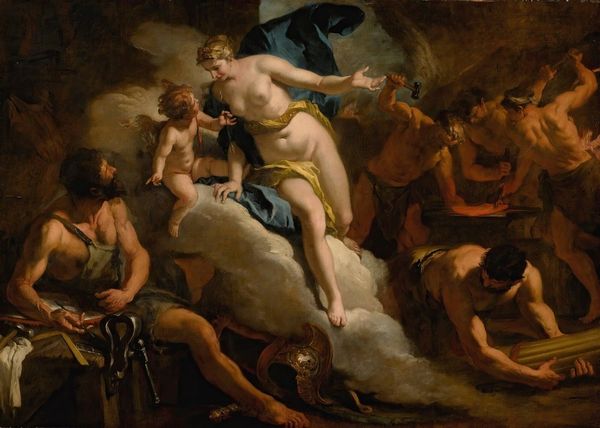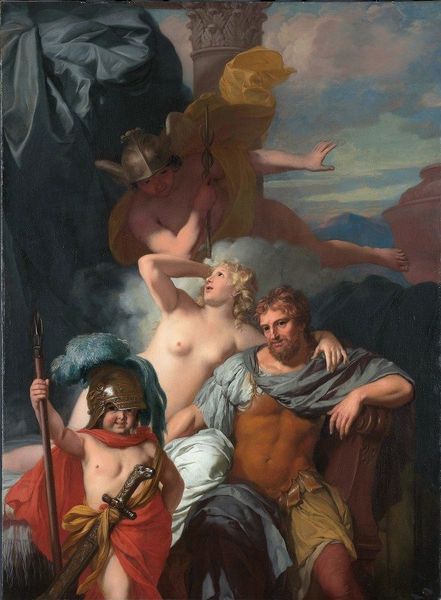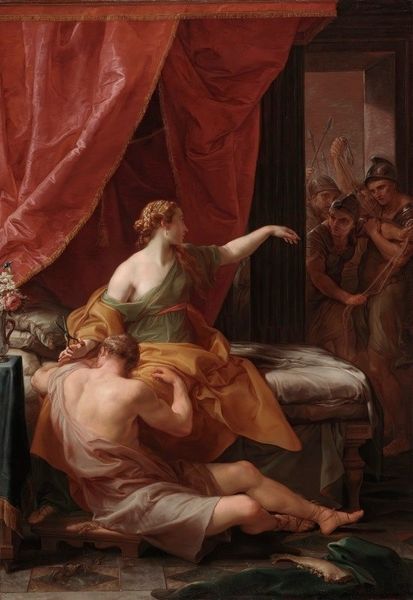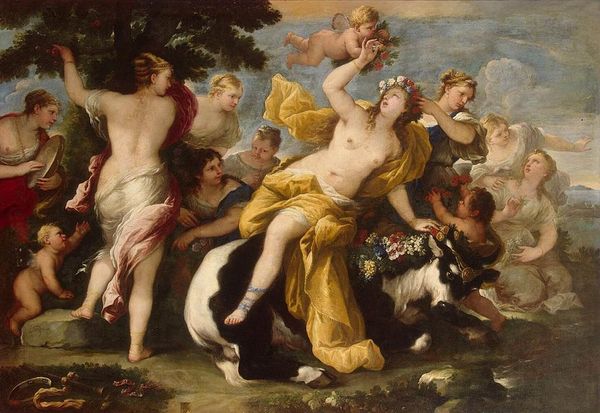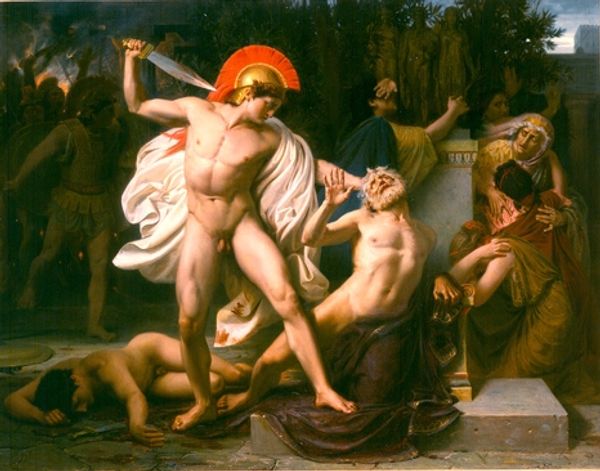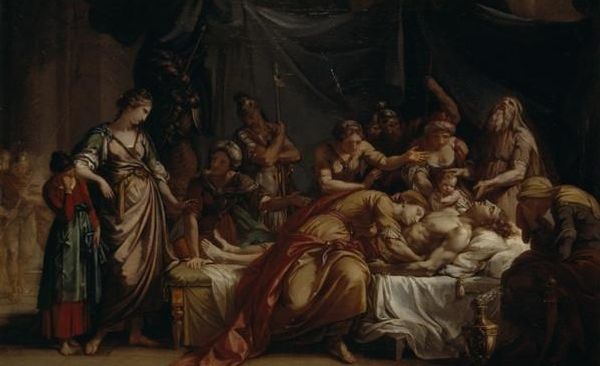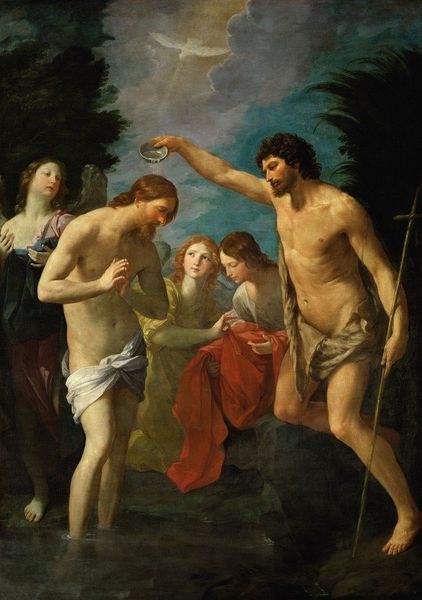
painting, oil-paint
#
allegory
#
baroque
#
painting
#
oil-paint
#
figuration
#
oil painting
#
mythology
#
history-painting
#
nude
#
portrait art
Copyright: Public Domain: Artvee
Curator: Gerard de Lairesse painted this mythological scene, "Bacchus and Ariadne," between 1676 and 1678 using oil paints. Editor: The overall feeling is quite theatrical, wouldn't you say? Almost like looking at a stage set. The dramatic lighting certainly adds to that sense. The rich impasto work conveys tangible qualities that suggest the production value of the fabrics of the clothing, the stone features, and the golden lion at the base of the bed, giving a texture to this god's realm of earthly pleasures. Curator: Precisely. The arrangement certainly leans into the conventions of Baroque theatricality. It's full of very familiar mythological tropes and compositions. The crown floating above is meant to signal the eternal love of Bacchus for Ariadne. But note how de Lairesse employs these standard representational languages in terms of luxury, labor, and utility. Editor: I am intrigued by the positioning of Ariadne and Bacchus, figures central to tales of love, wine, and drama. Ariadne's gesture of vulnerability alongside Bacchus's bold proclamation create such dynamic storytelling right before our eyes. Their iconic pairing really encapsulates the powerful allure of classical mythology. Curator: Of course, that particular positioning draws upon centuries of representations, further embellished in this version of Baroque aesthetics. The labor of image making, though, reflects an emerging mercantile sensibility about access to ancient icons. We see this especially in how these luxury objects and the classical allusions start to appear within bourgeoise domestic interiors, thereby becoming associated with power. Editor: Looking at the detail of the floating crown, the image calls up thoughts of transformations—emotional, psychological, and spiritual changes through iconic depictions. The very act of looking becomes a part of understanding transformation within mythological narratives, imbuing objects with so much importance for generations. Curator: A great point. And thinking through it along the lines of materialism, it really demonstrates a cycle of consumption in 17th century Dutch society: new materials, labor, the commodification of mythology through luxury, then consumption of these artworks among newly empowered elites. Editor: To see the image rendered in oils on this scale creates a rich tapestry for how symbols evolve within an artistic context over time. Curator: Right, to witness that type of economic expression rendered across such careful brushstrokes offers us such compelling material for considering art historical making as itself, a form of labor.
Comments
rijksmuseum about 2 years ago
⋮
Ovid described the following scene in his Metamorphoses: on the island of Naxos, Bacchus, the god of wine, chances upon the heartbroken and abandoned Ariadne. He takes her as his wife and gives her a crown of seven stars, which he subsequently casts up into the heavens. Lairesse revived Dutch painting with a classicizing style that was inspired by works from Greek and Roman antiquity.
Join the conversation
Join millions of artists and users on Artera today and experience the ultimate creative platform.
